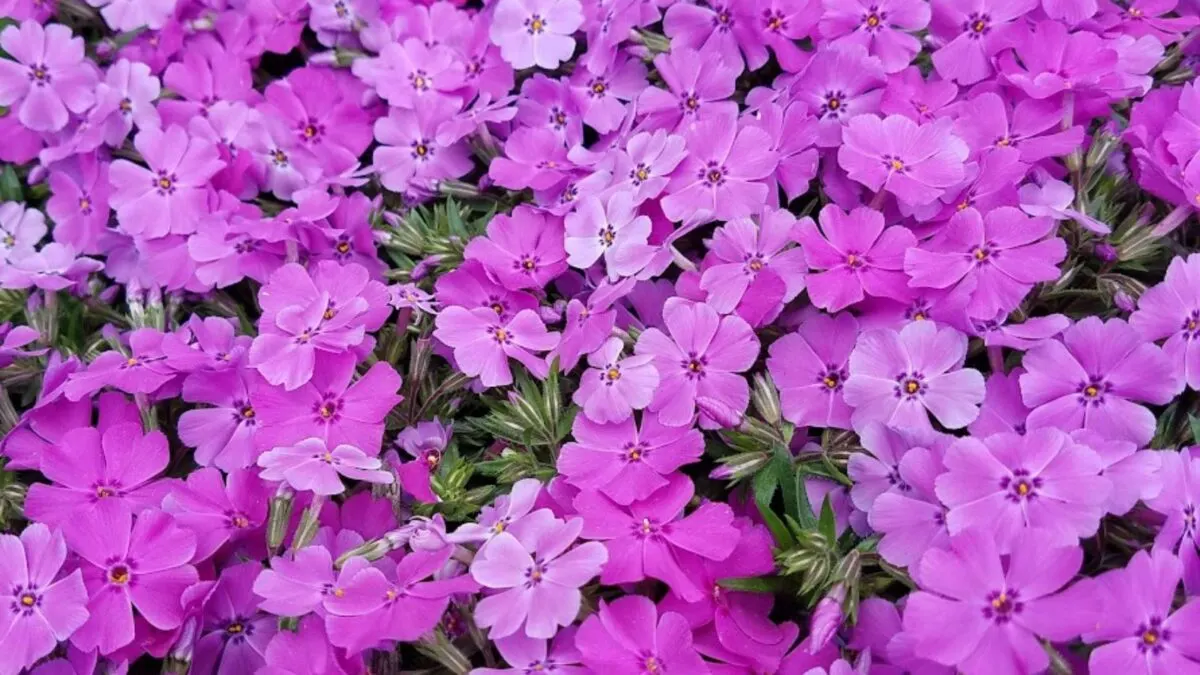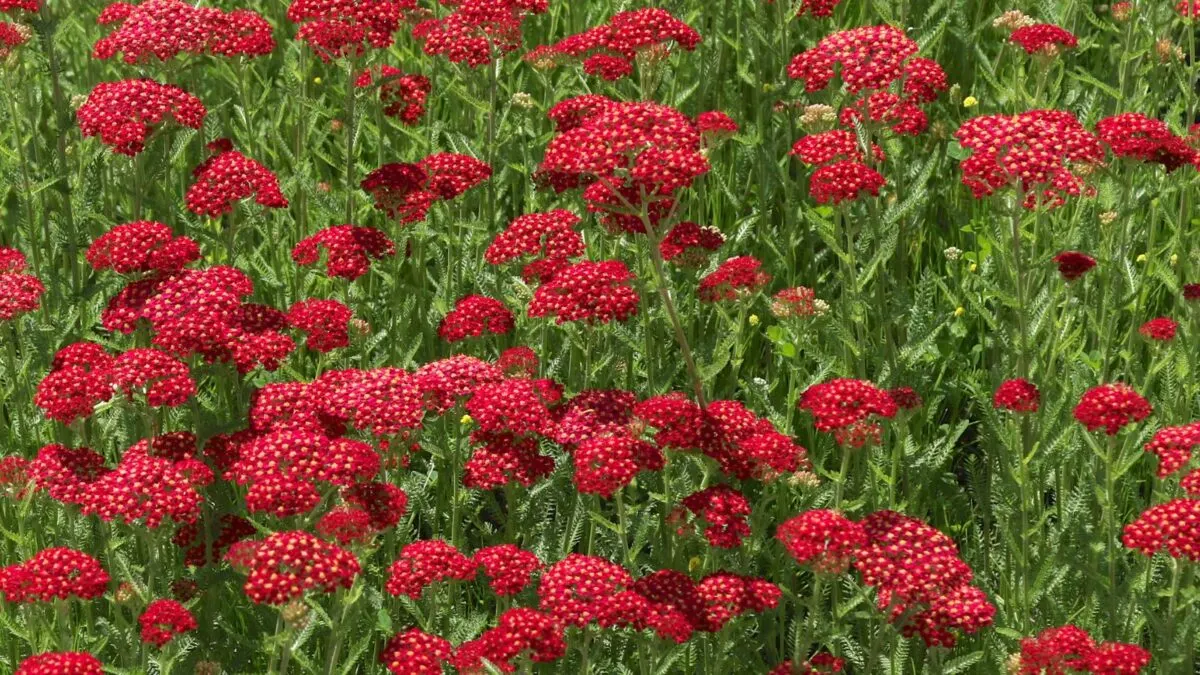Ground cover plants have many useful attributes, namely acting as a living mulch to reduce weed growth, improve soil moisture retention, and prevent runoff. Plus, they look pretty! And although it can be difficult to find attractive plants that will thrive in shady gardens, there are many beautiful shade-loving ground cover plants with lovely foliage and even stunning flowers.

1. Bunchberry (Cornus canadensis)

Though it grows less than a foot tall, bunchberry is actually a type of dogwood. This low-growing deciduous shrub features lovely glossy, elliptic leaves, as well as showy spring flowers with four white bracts and vivid red berries in late summer and fall.
Native to the Canadian forests and down to Appalachia, bunchberry grows best in USDA hardiness zones 2-6. It prefers part shade and moist, well-drained soil rich in organic matter.
2. Southern lady fern (Athyrium asplenioides)

Native to the central and eastern United States, southern lady fern is a two- to three-foot tall fern that spreads via rhizomes to form a dense, feathery ground cover. The broad, lacy fronds reach 10 inches across at their widest point and have yellow-green to red-brown stems.
Southern lady fern thrives in zones 5-9 and grows happily in moist to wet soil with dappled to full shade.
3. Hosta (Hosta spp.)

A shade-garden classic for a reason, the hosta features highly ornamental foliage as well as pretty flowers. The large leaves vary in shape and color depending on variety, but all grow in a basal rosette and have distinctive parallel veins radiating from the base. The tubular summer flowers bloom on a tall stem and range from white to purple.
Hostas like part to deep shade and moist, organically rich, well-drained soil. Depending on the variety, they grow in zones 3-9.
4. Spotted deadnettle (Lamium maculatum)

Though the name deadnettle may conjure images of a common weed, spotted deadnettle is actually quite pretty. The opposite, silvery-green leaves each have a large, silver blotch down the middle, and white to purple, two-lipped flowers bloom in whorls. It grows six to nine inches high and spreads quickly to form dense mats.
Spotted deadnettle grows well in zones 3-8 and appreciates well-drained soil and part shade.
5. Bishop’s hat (Epimedium spp.)

Bishop’s hat, also called barrenwort or fairy wings, gets two of its common names from its unique flowers. These spring blooms come in shades of yellow, white, pink, and red, with a fanciful, four-parted shape that resembles dainty wings or a jester’s or bishop’s hat. This low-growing plant has a mounding to spreading habit and compound leaves with heart- or arrow-shaped leaflets.
Native to China and the Mediterranean region, bishop’s hat grows best in zones 5-8. It tolerates deep shade and drought but prefers part to full shade and moist, fertile, well-drained soil.
6. Wild ginger (Asarum canadense)

A native, ornamental ground cover, wild ginger grows six to 12 inches high with attractive, heart-shaped leaves. Though it spreads slowly, this rhizomatic plant eventually forms a thick carpet of deeply veined foliage. The tiny, brownish spring flowers, though hidden beneath the leaves, attract pollinators.
Wild ginger thrives in zones 4-7 and tolerates deep shade, wet soil, drought, and deer. It prefers moist, well-drained soil high in organic matter.
7. Green and gold (Chrysogonum virginianum)

A low-growing, evergreen ground cover, green and gold grows to just one or two inches high but spreads moderately quickly via rhizomes to form mats of foliage. Small, golden, starry flowers dot the green foliage in spring and continue more sparsely in summer, with a light rebloom in fall.
Native to the eastern United States, green and gold thrives in zones 5-9. It is easy to grow in average, moist, well-drained soil in part to full shade.
8. American wintergreen (Gaultheria procumbens)

Sometimes called teaberry, American wintergreen produces a wintergreen fragrance when its leathery leaves are crushed. This low-growing evergreen has glossy, dark green, elliptical foliage that turns purple in fall. Small, waxy, pinkish-white flowers dangle from the stem throughout the summer, followed by scarlet, berry-like seed capsules.
American winterberry likes moist, organically rich soil with good drainage in part to deep shade. Native to woodlands of Canada and the United States, it grows best in zones 3-7.
9. Allegheny spurge (Pachysandra procumbens)

Allegheny spurge, or mountain pachysandra, forms a dense mat of semi-evergreen to evergreen foliage reaching six inches to a foot above the ground. In early spring, tiny, fragrant, white to pink flowers bloom in showy spikes. Though it shares the common name “spurge” with invasive euphorbia, Allegheny spurge is native to the United States and does not spread aggressively.
Allegheny spurge grows best in zones 5-9 in part to full shade and rich, moist soil.
10. Wood violet (Viola sororia)

Wood violet, or common blue violet, forms clumps of lovely heart-shaped leaves and spreads readily via rhizomes and self-sowing. This native herbaceous perennial blooms in spring with white to deep purple flowers nodding singly atop long, thin stems.
Wood violets tolerate a range of soil and light conditions, but they prefer rich, moist soil in dappled shade. They grow in zones 3-7.
11. Netted chain fern (Woodwardia areolata)
Netted chain fern first emerges in spring as pink-hued fiddleheads, which unfurl to glossy, green fronds with alternate, lance-shaped pinnae. Its name comes from the netted veins and chain-like rows of spores on its leaves. Spreading by creeping, branching rhizomes, it naturalizes into large colonies in ideal growing conditions.
Native to woodland swamps and bogs in eastern North America, netted chain fern thrives in moist to wet, organically rich soil in part to full shade. It grows well in zones 3-9.
Great Ground Cover Plants for Slopes

Steep slopes present a challenge in the garden, both in the initial planning stages and in relation to ongoing maintenance. Ground covers offer an excellent solution. These plants grow densely and often quickly, covering the ground to shade out weeds and stabilize banks, preventing erosion.
Here are some beautiful l ground cover plants for slopes.
Red Perennials That Love the Shade

These red-blooming perennial flowers are perfect for adding color to your partially shaded garden. While it’s hard to find red-flowering plants that thrive in full shade, many will tolerate partial or light afternoon shade.

